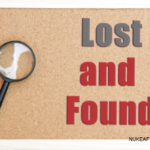
Dr. Mikuls
Dr. Mikuls points out that prior papers demonstrating that urate-lowering therapies may correlate with a lower risk of cardiovascular disease and related conditions have compared patients who had such therapies with patients who had no treatment.
“These are two very different populations in terms of risk,” he says. “Thus, we used an active-comparator design to examine whether guideline-[concordant] dose-escalation would lead to survival benefits.”
In their national, 10-year, observational, propensity-matched cohort study, Dr. Mikuls and colleagues analyzed data from the Veterans Health Administration. They studied 6,428 gout patients who received dose escalation of allopurinol (increase in dose within two years of therapy initiation) in comparison with 6,428 matched patients who received the drug without escalation.
All patients had a history of significant hyperuricemia at baseline (defined as a serum urate level of ≥8.0 mg/dL). Patients were matched on a variety of variables, including demographics, body mass index, medical comorbidities, medication use, healthcare utilization and gout-specific factors. In their secondary analysis model, the researchers also considered medication adherence and changing patient characteristics over the two-year period.1
In patients who received dose escalation, researchers found an increase in mortality from all causes (hazard ratio [HR] of 1.08; 95% confidence interval [CI] of 1.10–1.17). However, in analyses limited to the minority of dose-escalated patients who achieved a serum urate goal of less than 6.0 mg/dL, there was a non-significant reduction of 7% in the HR of cardiovascular-related mortality (HR 0.93; 95% CI of 0.76–1.14).1
Few patients were found to be optimally titrated according to ACR guidelines. Among those who received a dose escalation, only 10% were taking a daily dose greater than 300 mg allopurinol after two years of initiating treatment. Notably, only 31% had met a serum urate goal of less than 6.0 mg/dL. Escalation was more frequent for patients who had a rheumatologist directly involved in their care. A rheumatologist prescribed the initial allopurinol for 18% of patients who ultimately received dose escalation, vs. 7% of patients who did not receive dose escalation.1
Interpreting the Results
“Our results show that current practice in terms of allopurinol use does not extend survival,” explains Dr. Mikuls. “This may relate to the very low frequency of dose escalation that is used in day-to-day practice and the minority of patients who ever achieve target serum urate levels.”
He adds that caution is needed in interpreting these results, given the very small effect sizes observed. He notes the possibility that these results were affected by unmeasured confounding factors, even though the matched study was designed to account for risk differences.
Dr. Mikuls adds, “It’s reassuring that when patients achieved their serum urate goal—using a treat-to-target approach [in accordance] with ACR guidelines—there was a trend toward improved survival. On the surface, these results suggest there may yet be survival benefit to providing guideline-[concordant] care in gout.”
He points out that even if achieving serum urate goals does not, in fact, improve mortality, other benefits, including a reduction in the number of gout flares and improved quality of life, are well established.
Why aren’t more gout patients meeting serum urate goals? The reasons are probably multifactorial. Dr. Mikuls points out that many of these patients suffer from significant comorbidities that may occupy more of the clinician’s attention. “Physicians appear to either lack familiarity or comfort using allopurinol in daily doses exceeding 300 mg,” he says.
Across medical specialties, there is a lack of consensus on the value of achieving the serum urate goal. Under ACR guidelines, monitoring serum urate levels is given a level of evidence C (designated for recommendations based on expert opinion, case studies or standard of care).
Recently released guidelines from the American College of Physicians recommend initiating allopurinol at 50–100 mg/dL and then increasing by 50–100 mg/dL every few weeks. However, the authors conclude, “Evidence was insufficient to conclude whether the benefits of escalating urate-lowering therapy to reach a serum urate target (‘treat to target’) outweigh the harms associated with repeated monitoring and medication escalation.”5
This lack of consensus may be part of why so few physicians seem to be targeting serum urate goals.
Lack of patient education may also play a role. “It’s clear that those with gout do not always understand the roles of different medicines used in gout treatment, and patients rarely know about the existence of a serum urate goal,” says Dr. Mikuls. This stands in stark contrast to such diseases as diabetes or hypertension, where patients appear to be far more tuned in to goals.


